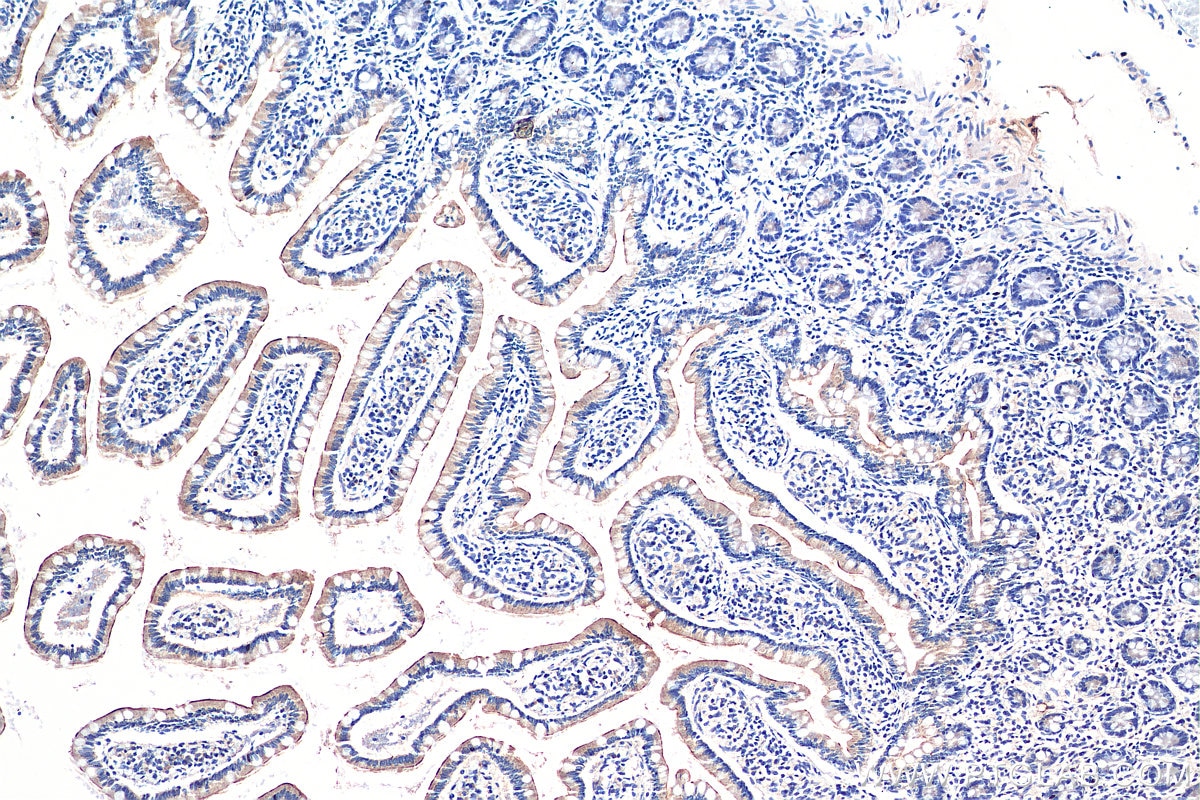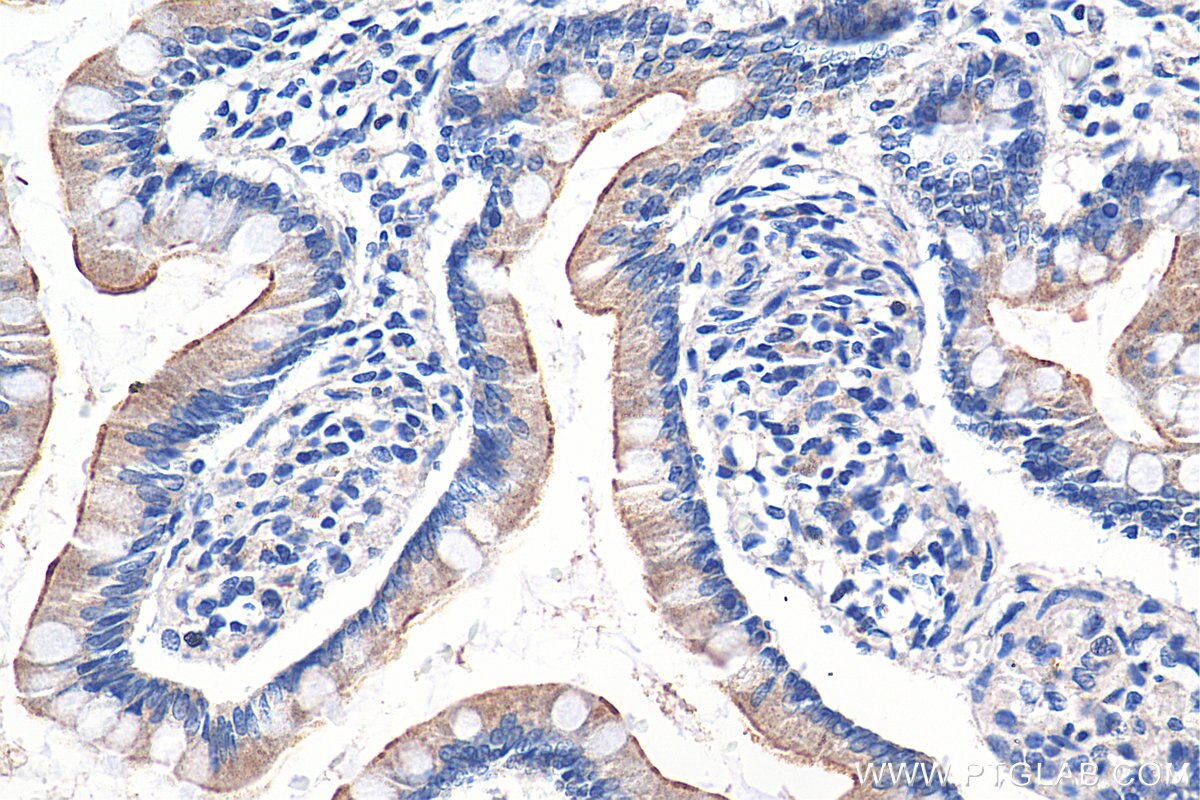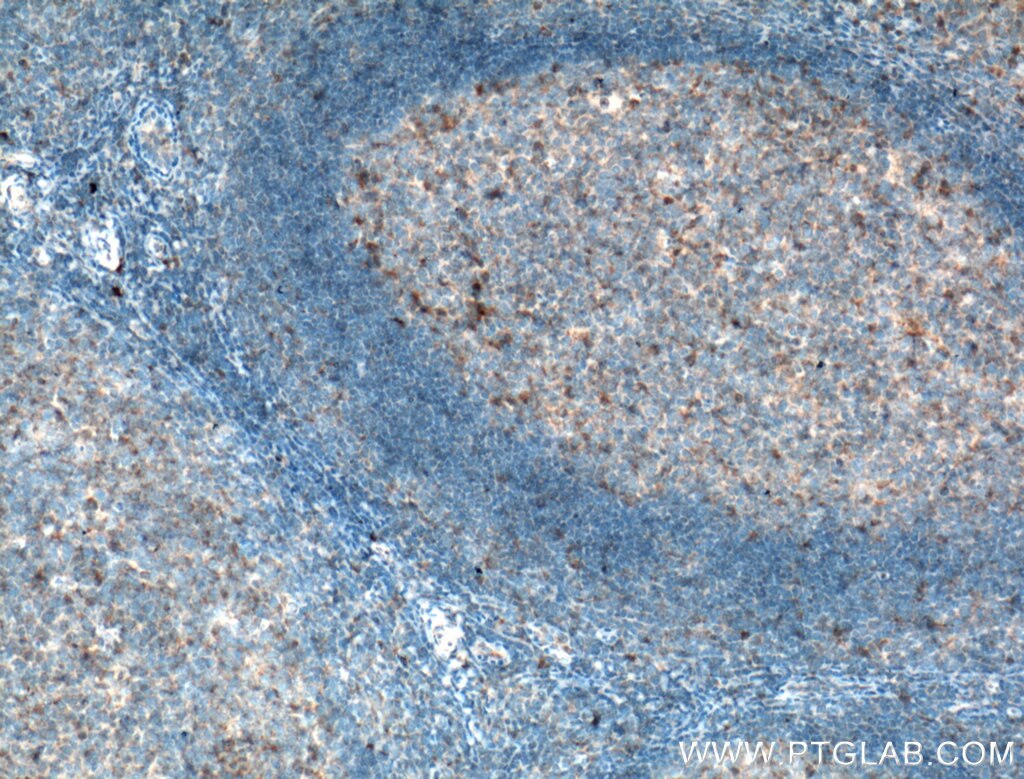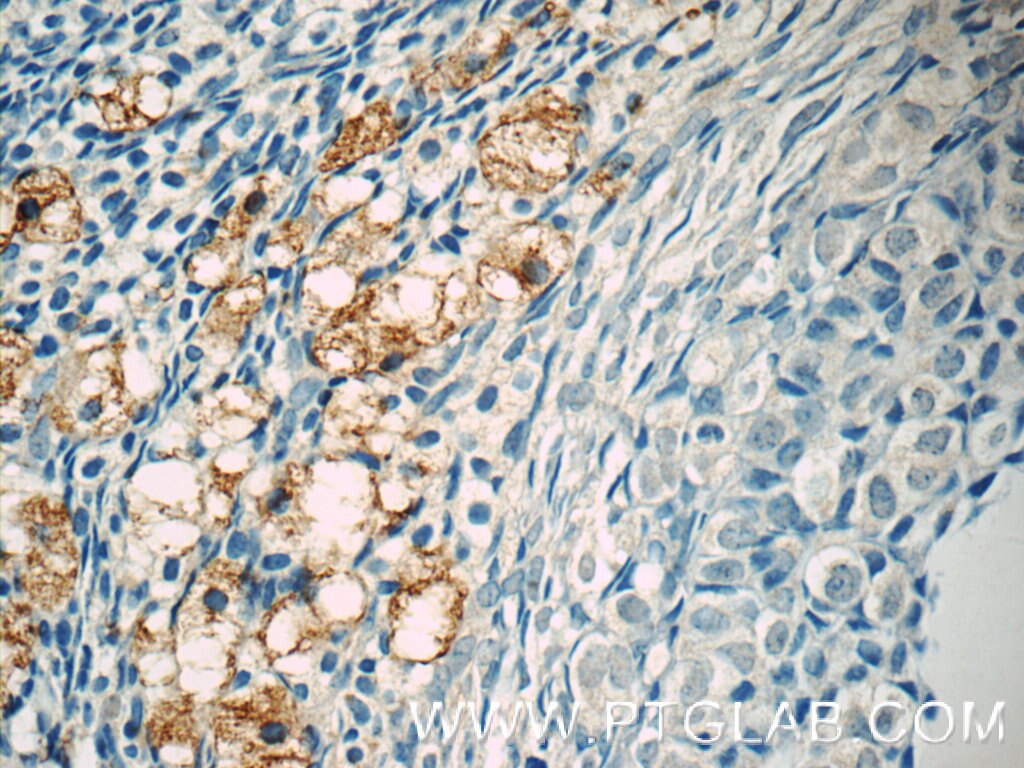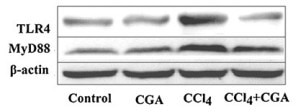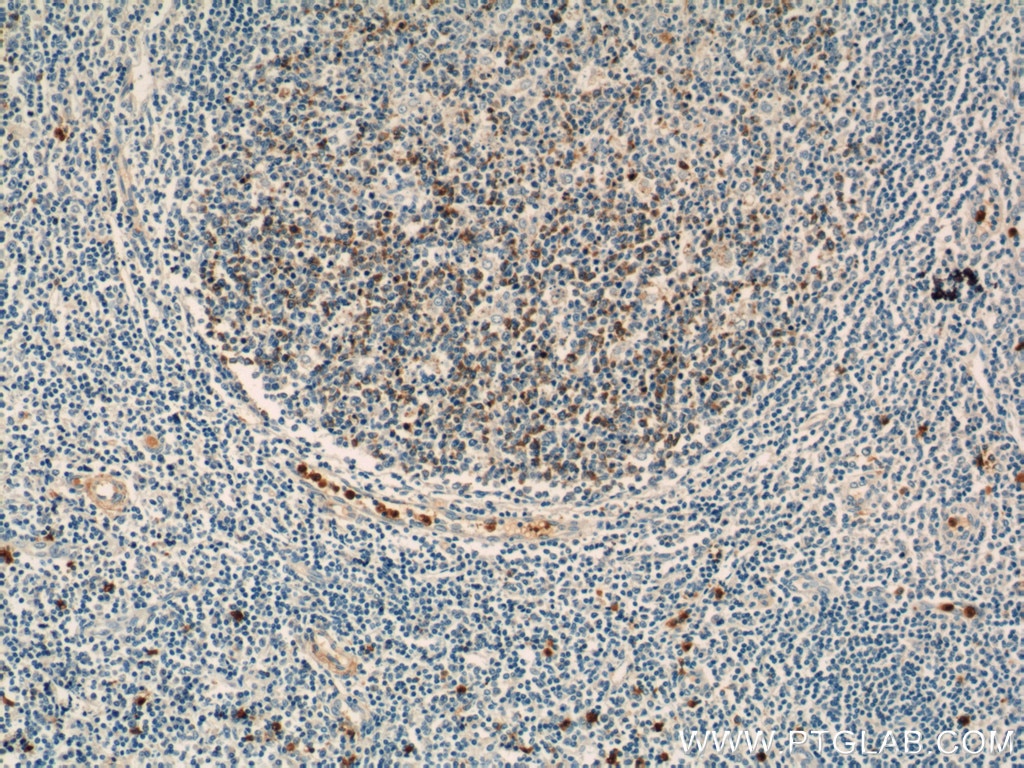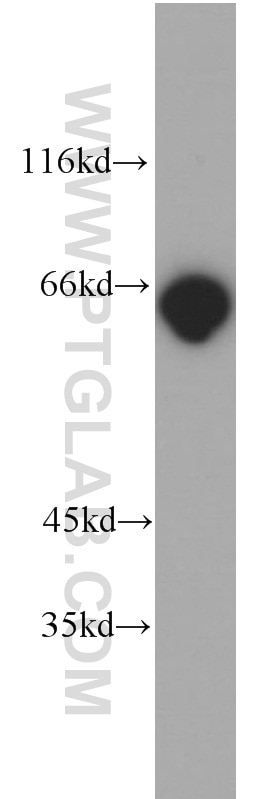Anticorps Polyclonal de lapin anti-TLR5
TLR5 Polyclonal Antibody for IP, IHC, ELISA
Hôte / Isotype
Lapin / IgG
Réactivité testée
Humain, souris et plus (1)
Applications
WB, IP, IF, FC, IHC, ELISA
Conjugaison
Non conjugué
N° de cat : 19810-1-AP
Synonymes
Galerie de données de validation
Applications testées
| Résultats positifs en IP | cellules HeLa |
| Résultats positifs en IHC | tissu d'intestin grêle humain, tissu d'amygdalite humain, tissu ovarien humain il est suggéré de démasquer l'antigène avec un tampon de TE buffer pH 9.0; (*) À défaut, 'le démasquage de l'antigène peut être 'effectué avec un tampon citrate pH 6,0. |
Dilution recommandée
| Application | Dilution |
|---|---|
| Immunoprécipitation (IP) | IP : 0.5-4.0 ug for 1.0-3.0 mg of total protein lysate |
| Immunohistochimie (IHC) | IHC : 1:200-1:800 |
| It is recommended that this reagent should be titrated in each testing system to obtain optimal results. | |
| Sample-dependent, check data in validation data gallery | |
Applications publiées
| WB | See 6 publications below |
| IHC | See 3 publications below |
| IF | See 4 publications below |
| FC | See 1 publications below |
Informations sur le produit
19810-1-AP cible TLR5 dans les applications de WB, IP, IF, FC, IHC, ELISA et montre une réactivité avec des échantillons Humain, souris
| Réactivité | Humain, souris |
| Réactivité citée | rat, Humain, souris |
| Hôte / Isotype | Lapin / IgG |
| Clonalité | Polyclonal |
| Type | Anticorps |
| Immunogène | TLR5 Protéine recombinante Ag13840 |
| Nom complet | toll-like receptor 5 |
| Masse moléculaire calculée | 858 aa, 98 kDa |
| Poids moléculaire observé | 97 kDa |
| Numéro d’acquisition GenBank | BC109119 |
| Symbole du gène | TLR5 |
| Identification du gène (NCBI) | 7100 |
| Conjugaison | Non conjugué |
| Forme | Liquide |
| Méthode de purification | Purification par affinité contre l'antigène |
| Tampon de stockage | PBS avec azoture de sodium à 0,02 % et glycérol à 50 % pH 7,3 |
| Conditions de stockage | Stocker à -20°C. Stable pendant un an après l'expédition. L'aliquotage n'est pas nécessaire pour le stockage à -20oC Les 20ul contiennent 0,1% de BSA. |
Informations générales
TLR5 belongs to the Toll-like receptor family which are important in the innate immune response to pathogens. TLRs are highly conserved from Drosophila to humans and share structural and functional similarities. TLR5 is known to recognize bacterial flagellin from invading mobile bacteria. TLR5 acts via MYD88 and TRAF6, leading to NF-kappa-B activation, cytokine secretion and the inflammatory response. Mutations in TLR5 gene have been associated with both resistance and susceptibility to systemic lupus erythematosus, and susceptibility to Legionnaire disease.
Protocole
| Product Specific Protocols | |
|---|---|
| IHC protocol for TLR5 antibody 19810-1-AP | Download protocol |
| IP protocol for TLR5 antibody 19810-1-AP | Download protocol |
| Standard Protocols | |
|---|---|
| Click here to view our Standard Protocols |
Publications
| Species | Application | Title |
|---|---|---|
Theranostics Prussian blue nanozyme-mediated nanoscavenger ameliorates acute pancreatitis via inhibiting TLRs/NF-κB signaling pathway. | ||
Int J Mol Sci Myeloid-Derived Suppressor Cells Gain Suppressive Function during Neonatal Bacterial Sepsis. | ||
Int J Mol Sci Cross-Talk of Toll-Like Receptor 5 and Mu-Opioid Receptor Attenuates Chronic Constriction Injury-Induced Mechanical Hyperalgesia through a Protein Kinase C Alpha-Dependent Signaling. | ||
EBioMedicine Roseburia intestinalis stimulates TLR5-dependent intestinal immunity against Crohn's disease | ||
Oncotarget Toll-like receptor 5 gene polymorphism is associated with breast cancer susceptibility. | ||
Cells Fibronectin Functions as a Selective Agonist for Distinct Toll-like Receptors in Triple-Negative Breast Cancer. |


